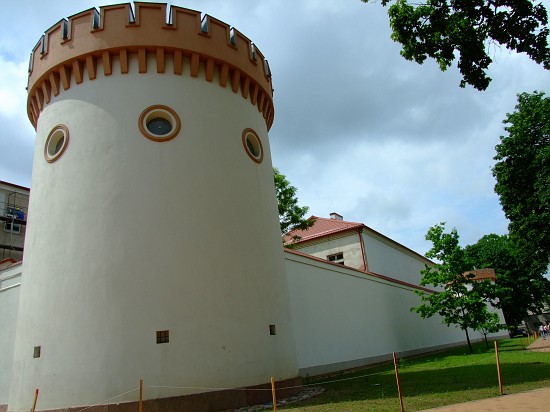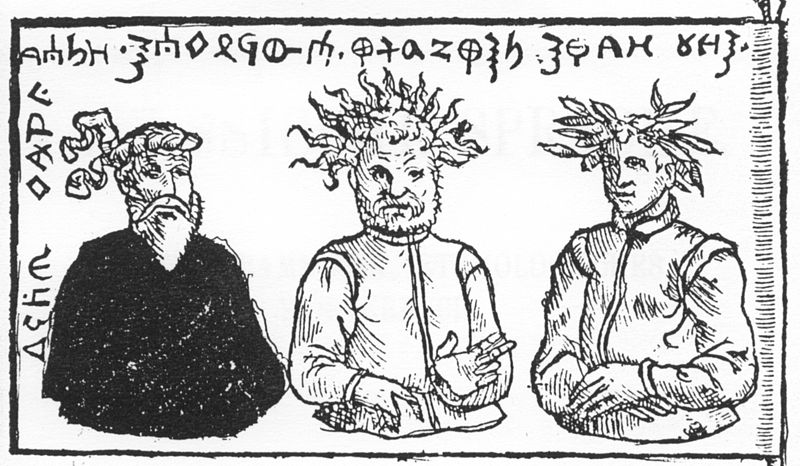|
Skalvian Language
The Scalovians ( lt, Skalviai; german: Schalauer), also known as the Skalvians, ''Schalwen'' and ''Schalmen'', were a Baltic tribe related to the Prussians. According to the ''Chronicon terrae Prussiae'' of Peter of Dusburg, the now extinct Scalovians inhabited the land of Scalovia south of the Curonians and Samogitians, by the lower Neman River ca. 1240. Geography This region is located at both sides of the river Memel north of Nadruvians and south of Samogitia. In the North-East it stretched to rivers Šešupė, Ežeruona and Jūra. In the East it bordered on Sudovia, in the North-West on river Minija, in the West on the Curonian Lagoon and in the South-West on river Gilija. The center were the towns of Rusnė, Ragainė and Tilžė. Name The meaning is uncertain: ''skalwa'' "splinter (living split off)" or ''skalauti'' "between waters". According to Prussian legends, the tribe's name is derived from one of the sons of King Widewuto named Schalauo. History The inhabita ... [...More Info...] [...Related Items...] OR: [Wikipedia] [Google] [Baidu] |
Baltic Tribes C 1200
Baltic may refer to: Peoples and languages *Baltic languages, a subfamily of Indo-European languages, including Lithuanian, Latvian and extinct Old Prussian *Balts (or Baltic peoples), ethnic groups speaking the Baltic languages and/or originating from the Baltic countries *Baltic Germans, historical ethnic German minority in Latvia and Estonia *Baltic Finnic peoples, the Finnic peoples historically inhabiting the area on the northeastern side of the Baltic sea Places Northern Europe * Baltic Sea, in Europe * Baltic region, an ambiguous term referring to the general area surrounding the Baltic Sea * Baltic states (also Baltic countries, Baltic nations, Baltics), a geopolitical term, currently referring to Estonia, Latvia and Lithuania * Baltic Provinces or governorates, former parts of the Swedish Empire and then Russian Empire (in modern Latvia, Estonia) * Baltic Shield, the exposed Precambrian northwest segment of the East European Craton * Baltic Plate, an ancient tectonic p ... [...More Info...] [...Related Items...] OR: [Wikipedia] [Google] [Baidu] |
Rusnė
Rusnė (german: Ruß) is a border town in Šilutė district, Lithuania, located on the Rusnė Island in the Nemunas Delta, 9 km south-west from Šilutė. History Rusnė was first mentioned in historical sources in the 14th century. In 1419 the first church was built in Rusnė, and in 1553 a Lithuanian parish school was established. Accessed September 16, 2006 In 1863 the Rusnė synagogue opened. In 1946 Rusnė received municipal rights, and in 1967 the whole Island of Rusnė was given this status. Geography Some parts of the town of Rusnė near Lake Dumblė are located below the sea level and are the lowest in Lithuania. Rusnė is on the |
Western Baltic Languages
The Western Baltic languages were a group of Baltic languages that were spoken by Western Baltic peoples. Western Baltic is one of the two primary branches of Baltic languages, along with Eastern Baltic. It includes Old Prussian, Sudovian, Western Galindian, possibly Skalvian and Old Curonian. Attestation The only properly attested Western Baltic language of which texts are known is Old Prussian, although there are a few short remnants of Old Curonian and Sudovian in the form of isolated words and short phrases. Many Western Baltic languages went extinct in the 16th century while Old Prussian ceased to be spoken in the early 18th century. Classification The only languages securely classified as Western Baltic are Old Prussian and West Galindian, which could also be a dialect of Old Prussian. Most scholars consider Skalvian to be a Westen Baltic language or dialect. Another possible classification is a transitional language between Western and Eastern Baltic. Sudovian is e ... [...More Info...] [...Related Items...] OR: [Wikipedia] [Google] [Baidu] |
Balto-Slavic Languages
The Balto-Slavic languages form a branch of the Indo-European family of languages, traditionally comprising the Baltic and Slavic languages. Baltic and Slavic languages share several linguistic traits not found in any other Indo-European branch, which points to a period of common development. Although the notion of a Balto-Slavic unity has been contested (partly due to political controversies), there is now a general consensus among specialists in Indo-European linguistics to classify Baltic and Slavic languages into a single branch, with only some details of the nature of their relationship remaining in dispute. A Proto-Balto-Slavic language is reconstructable by the comparative method, descending from Proto-Indo-European by means of well-defined sound laws, and from which modern Slavic and Baltic languages descended. One particularly innovative dialect separated from the Balto-Slavic dialect continuum and became ancestral to the Proto-Slavic language, from which all Slav ... [...More Info...] [...Related Items...] OR: [Wikipedia] [Google] [Baidu] |
Rumbaudas Valimantaitis
Rumbaudas Valimantaitis (; died in 1432) was an influential Lithuanian noble of Zadora coat of arms. He was a son of Valimantas and brother of Mykolas Kęsgaila. He became Elder of Samogitia (1409–1411) and Grand Marshal (1412–1432). He first appears in written sources as a witness to the Pact of Vilnius of January 1401. His patrimony was in Deltuva, but he also had possessions in Samogitia and volost of Svislach. In 1409, he became Elder of Samogitia and instigated the Second Samogitian Uprising on orders of Vytautas, Grand Duke of Lithuania. The uprising grew into the Polish–Lithuanian–Teutonic War and it is believed that Rumbaudas commanded Samogitian troops in the Battle of Grunwald (1410). After the war, he became Grand Marshal of Lithuania while his brother Mykolas Kęsgaila became Elder of Samogitia. In 1413, he was among Lithuanian nobles negotiating the status of Samogitia with Benedict Makrai, a mediator appointed by Sigismund of Luxemburg. In 1422, he witne ... [...More Info...] [...Related Items...] OR: [Wikipedia] [Google] [Baidu] |
Pagėgiai
Pagėgiai (, german: Pogegen) is a city in south-western Lithuania. It is located in the medieval region of Scalovia in the historic region of Lithuania Minor. It is the capital of Pagėgiai municipality, and as such it is part of Tauragė County. Name The name of the town literally means "at Gėgė" (: grove of alders, hay meadows, fields) and it is believed that the Gėgė river (also Gäge, Jäge) once flowed through the town. History The settlement dates back to the Middle Ages. In 1454, King Casimir IV Jagiellon incorporated the region to the Kingdom of Poland upon the request of the anti-Teutonic Prussian Confederation. After the subsequent Thirteen Years' War (1454–1466) the village was a part of Poland as a fief held by the Teutonic Knights, and thus was located within the Polish–Lithuanian union, later elevated into the Polish–Lithuanian Commonwealth. From the 18th century, it was part of the Kingdom of Prussia, and from 1871 it was also part of Germ ... [...More Info...] [...Related Items...] OR: [Wikipedia] [Google] [Baidu] |
Tauragė
Tauragė (; see other names) is an industrial city in Lithuania, and the capital of Tauragė County. In 2020, its population was 21,520. Tauragė is situated on the Jūra River, close to the border with the Kaliningrad Oblast, and not far from the Baltic Sea coast. Although first mentioned in 1507, Tauragė received its city charter only in 1924 and its coat of arms (a silver hunting horn in a red field) in 1997. Notable buildings in the city include the castle (19th c. Russian Empire Customs) (currently housinTauragė Region Museum , 19th c. Post office, beautiful buildings from the 20th c. inter-war period, several churches: the Lutheran (built in 1843), the Catholic (1904) and Orthodox (1933). Lithuanian, Swedish and Danish factories operate in the city. Nowadays Tauragė is famous for its car markets and adventure parks. |
Teutonic Knights
The Order of Brothers of the German House of Saint Mary in Jerusalem, commonly known as the Teutonic Order, is a Catholic religious institution founded as a military society in Acre, Kingdom of Jerusalem. It was formed to aid Christians on their pilgrimages to the Holy Land and to establish hospitals. Its members have commonly been known as the Teutonic Knights, having a small voluntary and mercenary military membership, serving as a crusading military order for the protection of Christians in the Holy Land and the Baltics during the Middle Ages. Purely religious since 1810, the Teutonic Order still confers limited honorary knighthoods. The Bailiwick of Utrecht of the Teutonic Order, a Protestant chivalric order, is descended from the same medieval military order and also continues to award knighthoods and perform charitable work. Name The name of the Order of Brothers of the German House of Saint Mary in Jerusalem is in german: Orden der Brüder vom Deutschen Haus der ... [...More Info...] [...Related Items...] OR: [Wikipedia] [Google] [Baidu] |
Peter Von Dusburg
Peter of Dusburg (german: Peter von Dusburg; la, Petrus de Dusburg; died after 1326), also known as Peter of Duisburg, was a Priest-Brother and chronicler of the Teutonic Knights. He is known for writing the ''Chronicon terrae Prussiae'', which described the 13th and early 14th century Teutonic Knights and Old Prussians in Prussia. Life Peter's dates of birth and death are unknown, although he lived from the second half of the 13th century until the first half of the 14th century. Initially it was thought he was from Duisburg, Germany, and in some texts he is referred to as "Peter of Duisburg". Other research indicates he may have instead come from Doesburg, now in the Netherlands.Pollakówna, Marzena. ''Kronika Piotra z Dusburga'' ("The Chronicle of Peter of Dusburg"), Acta Poloniae Historica, Wrocław, Warszawa, Kraków, vol. 19, pp. 69-88. 1968; In 1324, probably while in Königsberg,Christiansen, pg. 224 Peter began working on his ''Chronicon terrae Prussiae'' on behalf of Gra ... [...More Info...] [...Related Items...] OR: [Wikipedia] [Google] [Baidu] |
Ragnit
Neman (russian: Не́ман; german: Ragnit; lt, Ragainė; pl, Ragneta), is a town and the administrative center of Nemansky District in Kaliningrad Oblast, Russia, located in the historic region of Lithuania Minor, on the steep southern bank of the Neman River, where it forms the Russian border with the Klaipėda Region in Lithuania, and northeast of Kaliningrad, the administrative center of the oblast. Population figures: History ''Ragnita'' (from Old Prussian: ''ragas'', "spur"), founded in 1288, was a settlement of the Baltic (Old Prussian) tribe of Skalvians. It was contested by the Grand Duchy of Lithuania since its creation in the 13th century, and on April 23, 1289 it was conquered by the Teutonic Knights, who built a castle there between 1397 and 1409, which later became the seat of a ''Komtur''. Construction works were supervised by the Master of the Teutonic Order Konrad Fellenstein of Marienburg. A few decades later, a now-destroyed 25 meter guard tower w ... [...More Info...] [...Related Items...] OR: [Wikipedia] [Google] [Baidu] |
Widewuto
Widewuto (also ''Viduutus'', ''Vidvutus'', ''Witowudi'', ''Waidewut'', ''Vaidevutis'') was a legendary king of the pagan Prussians who ruled along with his elder brother, the high priest ('' Kriwe-Kriwajto'') Bruteno in the 6th century AD. They are known from writings of 16th-century chroniclers , Simon Grunau, and Lucas David. Though the legend lacks historical credibility, it became popular with medieval historians. It is unclear whether the legend was authentically Prussian (i.e. recorded from Prussian mythology) or was created by Grunau (possibly inspired by Biblical Moses and Aaron), though Lithuanian researchers tend to support its authenticity. Names Widewuto's name is found in literature in different forms: Veijdenutus, Vydevutis, Vidowuto, Viduutus, Waidewut, Wejdewut, Wenedut, Widewuto, Widewutte, Widiwutus, Wydowudo, Wydowudus, Widowuto, Wydowuto, Widowutus, Witoud, Witoudo, Witouito, Witowudus, Witowuto, Wotowudo, Vaidevutis (modern Lithuanian emendation). As for his ... [...More Info...] [...Related Items...] OR: [Wikipedia] [Google] [Baidu] |



